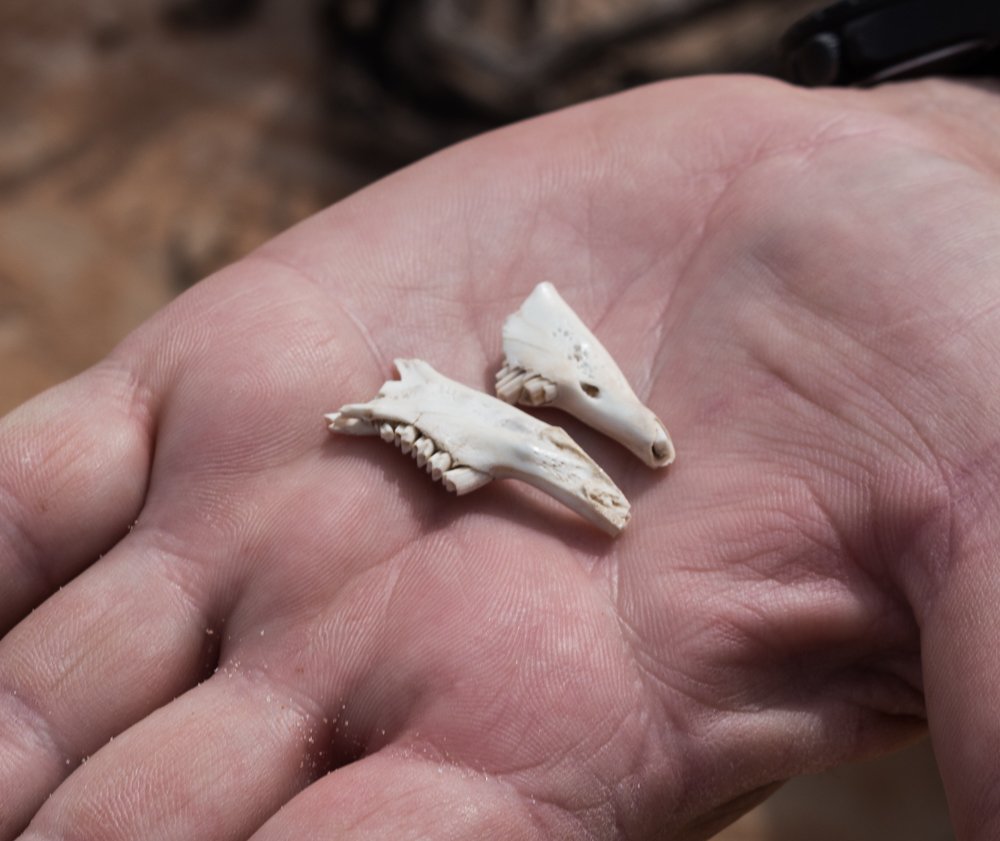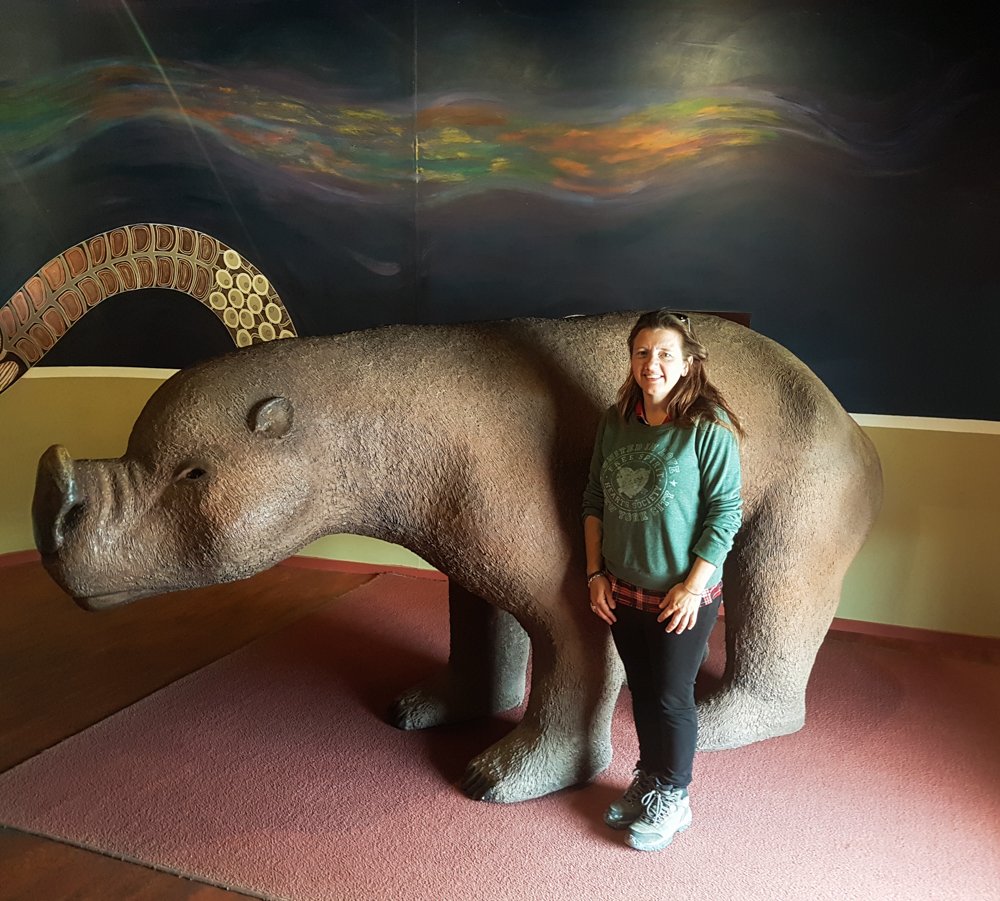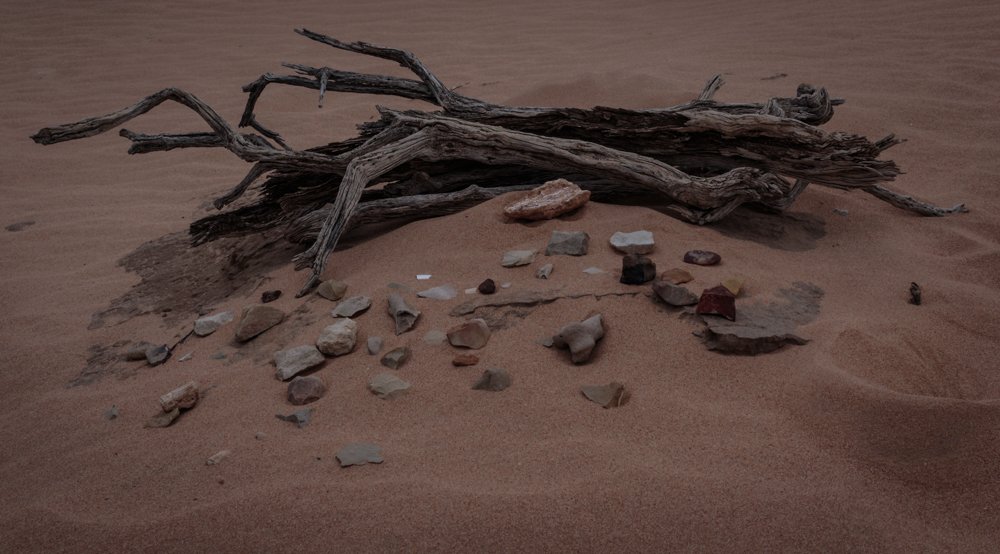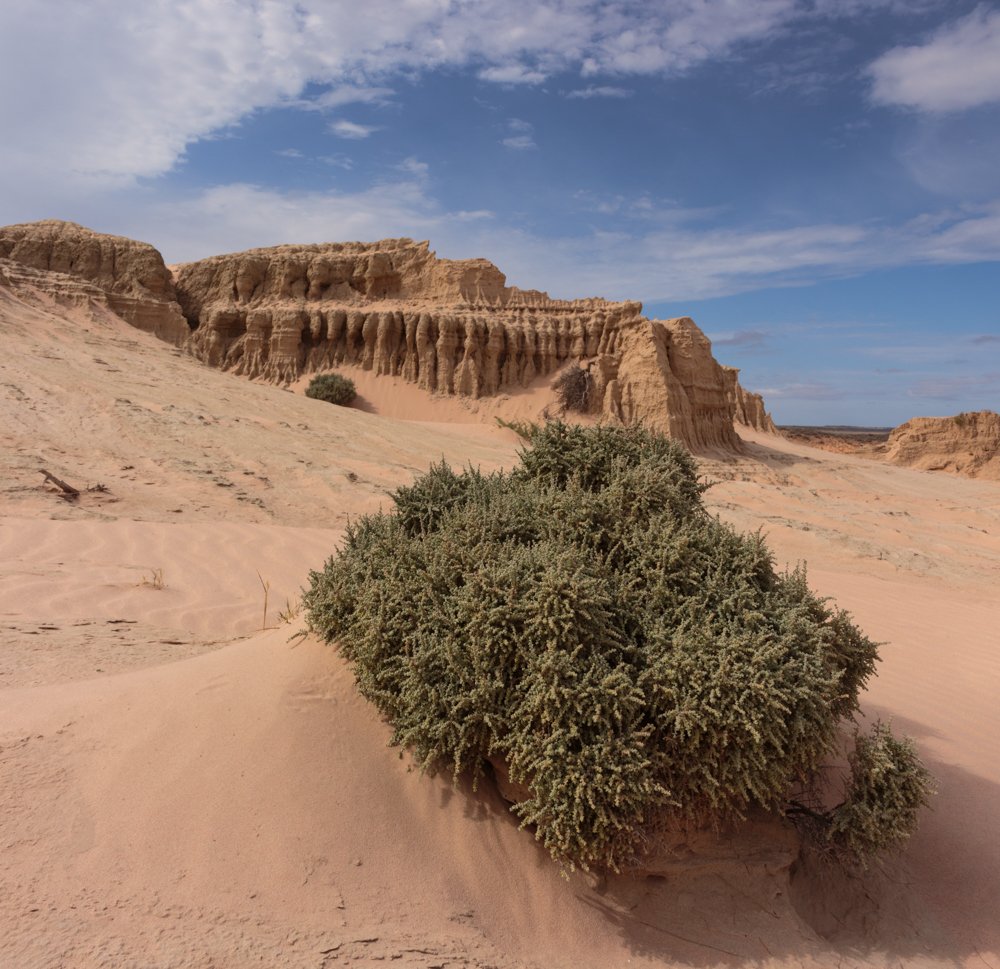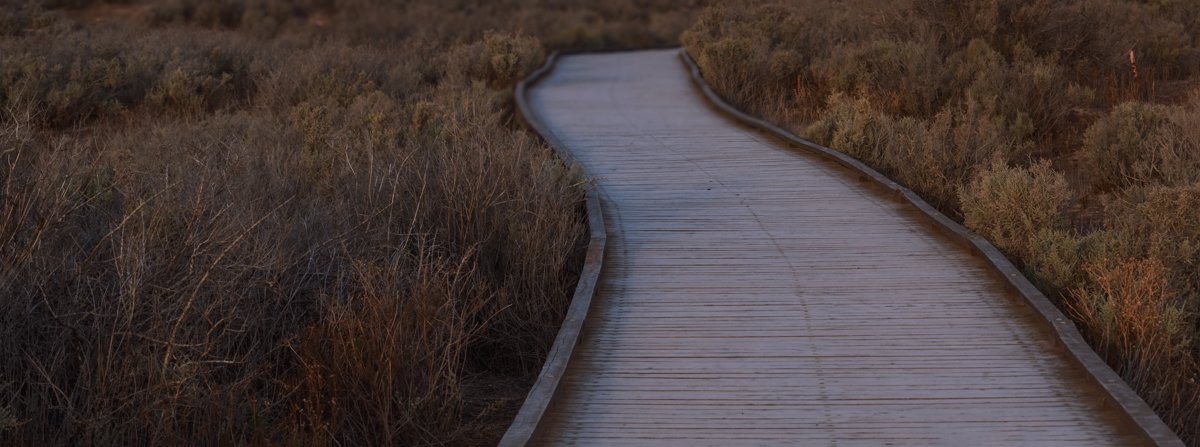
The people began the business of sorrow weeks ago. The beasts, at least twice as high as them, keep their distance. Sounds of the women's wails echo across the lake. The furry animals would be cute if they weren't so big, willing to raise hell if cornered. The last one that wandered too close to the grief now roasting in the fire pit. Food for the kin coming in for the funeral. The men glance at the beasts between dance and song, worried at how few there are. The sight pulls their thoughts back to the old man, before that elbow started giving him trouble he was a good hunter. He fed the young men who chant for him now, taught them how to bring down the animals, to gather and fish. Showed them how to use their teeth to strip the reeds into twine and knocked a few of those same teeth out to bring them into manhood. They place his body in the hole, bend his legs, lie him on his side, cross his hands over his belly and scatter red ochre in the grave. Returned to dust. Ritual means something and they take care to get it right, honour a long life of service. I can't tell you the year as they lay him down, history has not yet begun.
It is 42,000 years later and living out of a tiny campervan has worn me down. Mungo Lake is the last stop on my self-drive tour of Outback Australia. A few days by the water is what I need to refresh for the final push home. The dirt road throws up a haze as I putter along in my two wheel drive. I do my best to avoid rocks and the three-trailer long trucks that roar past, I am becoming more and more confused. Google Maps says there is a big lake alongside and I see nothing but dry plains of low lying scrub and wildlife. The roos and emus are plentiful but after so long out the back of Australia I am past being mesmerised by them. I arrive at the campground, pitch my home for the next couple of days and wander off to find water. The nearby Mungo Lookout promises a panoramic view of the 20km long lake. I arrive to find a sensational view of arid plains. Not a drop of water for as far as I can see, which is a long way. Google has betrayed me with its lies. There is nothing here.
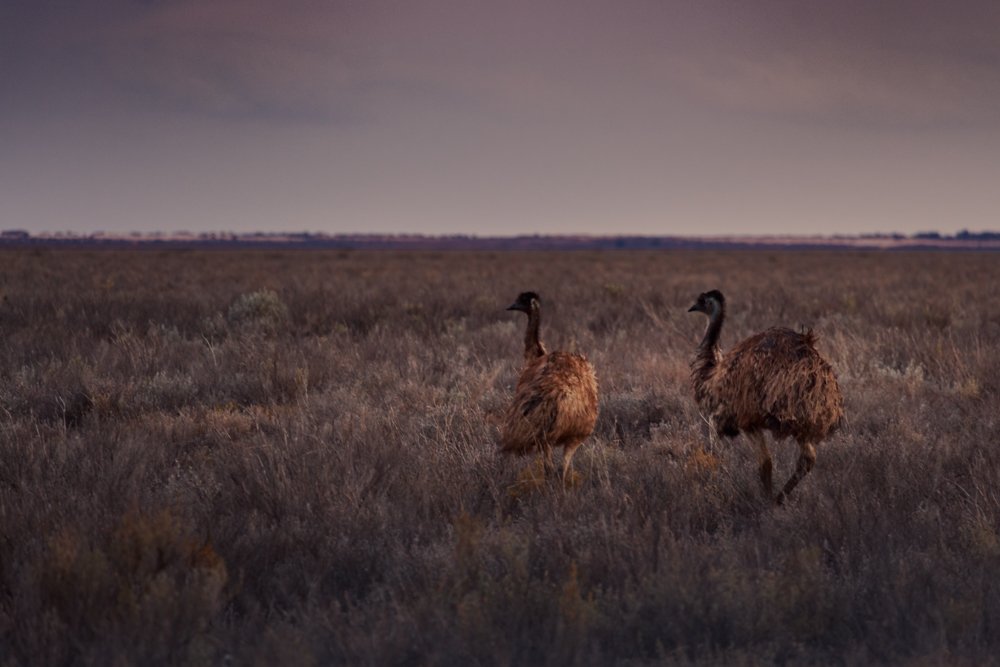
Emus roaming the dry bed of Mungo Lake
I walk slump-shouldered back to camp and drive off in search of an answer: why did a handful of people tout Mungo National Park as a must-see gem? Ranger Lance greets me with a grin as I walk, bedraggled, through the doors of the visitors centre. We exchange pleasantries, his authentic, mine societal politeness with an edge. I ask him where he hides the water. "Well," he says, "you're about eighteen thousand years too late."
In response to me dropping down in a chair with the apathy of a teenager who has just been asked to clean their room, Ranger Lance offers to sweeten the Mungo deal by showing me around. He takes me to the courtyard and points at some footprints set in stone. Australia conjures images of perfect weather, a vast Outback, cute koalas and slang pouring from the mouths of laid back, often drunk, white people who are bloody good at sport. Lance begins to tell a different tale. One of a land that is the keeper of bones and stories. I am looking, he explains, at casts of the largest known set of preserved human Ice Age footprints.
As the Ice Age is ending the once full lakes are now clay pans covered in a thick layer of mud. A family group - mothers, fathers, children, adolescents - move across them. Perhaps seeking resources elsewhere as climate change closes in. Or moving toward the dunes to trade tools, weapons, ochre and stories in the same way their ancestors have done for thousands of years. A rebellious child runs away from the group, called back to stick close to the safety of the tribe. Their feet sink in to the mud, layers of sediment coating them. A few days later a one-legged man takes his place with agile hunters in chase of prey. He keeps the pace, adept at hopping through sludge. The clay slides under the group's heels. A hunter grazes his knuckle in the mud as he sweeps up a spent spear from the ground, taking aim at an emu. After they are gone the winds kick up and blow sand across the basins, covering the tracks. The clay dries and 20,000 years later, in 2003, the winds blow again to uncover them.
The footprint replicas are laid out so that they look like they continue across the plains. I do not realise that Lance has stopped speaking. I am caught up in imagining the hunters disappearing beyond the horizon, struck silent by this preservation of humanity. A child misbehaving, parents protecting children, people out walking, talking and working together to sustain their community. I feel tears skirt the rims of my eyes. I have found my water source, it will not be the last time I cry here.
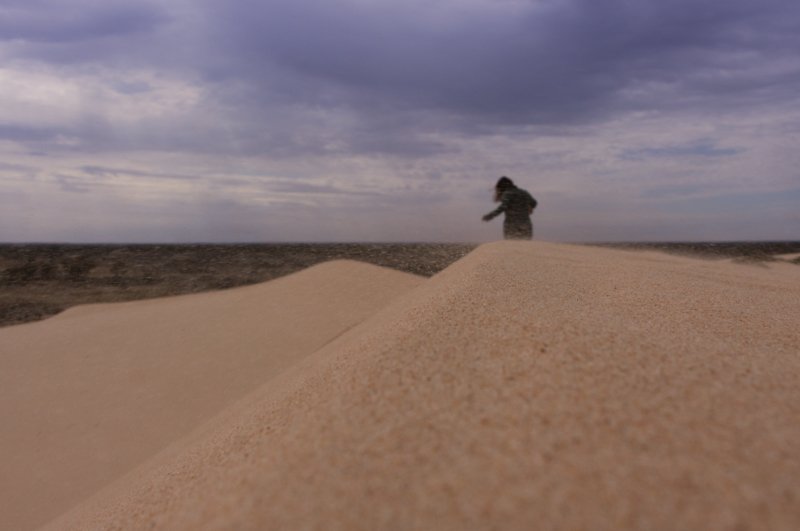
Dancing on the dunes at The Walls of China, Mungo Lake
Later I meet Lance at the sand dunes 10 kilometres across the way where he introduces me to the old man. We stand in a field of mars-like formations carved by wind and erosion. Lance squats in an indented section and sweeps his hand across it to reveal a pile of bones. He reels off their age, gifted at weaving tourists through time - 10,000 years old, 20,000 years, 40,000 years. Lance hands each bone to me, explains the animal they came from. This one extinct, that one no longer in the region. I take each with care, afraid to hold something so old, shocked that they are lying in the open.
I am standing in an ancient Aboriginal fire pit. A place once populated by bigger versions of our modern native animals. Among them two-tonne wombats and two metre high kangaroos that could not hop because of their weight. I look across the plains, the open space gives my mind a lot of room to blow the kangaroos and emus up to their Megafauna size. Mungo lifts me out of November 2017 and places me on the shore of a vibrant water-filled lake. I watch tribes gather around fires, children play in groups, giant animals being roasted to fill hungry bellies. I hear chatter, laughter and the stories of Dreamtime.
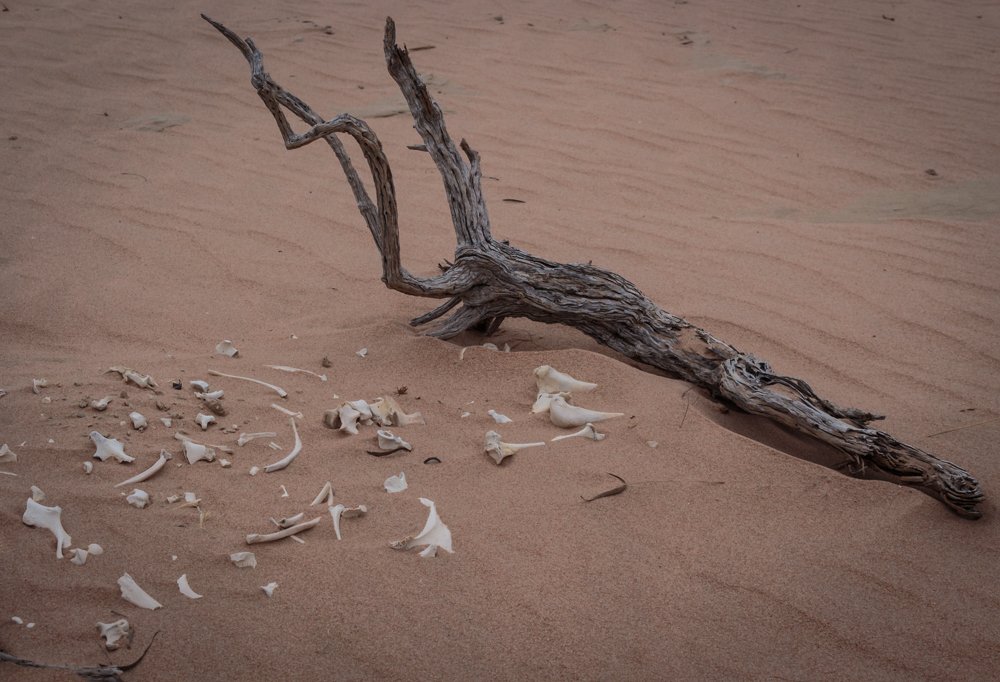
Ancient bones
For a couple of centuries these Aboriginal Dreamtime tales were thought to be the made up. The fiction of a primitive and uneducated culture. Cave paintings of giant beasts now known as Megafauna dated Aboriginal presence in Australia as far earlier than the 20,000 years academics had agreed on. As such they were considered the imaginings of hunters talking themselves up. An ancient version of catching a fish that was THIS big. Until in 1974 the winds of Mungo did what they do best, revealing bones and stories. They call him Mungo Man, an almost fully preserved skeleton, protected for 42,000 years by the sand. A man who rewrote our understanding of human movement across this planet and validated the Dreamtime. He was removed from the dunes for study and returned to his people this month after a long fight for his right to rest in peace.
The way that the people who lived on this lake are still present in its geology touches me on a primal level. We all want our lives to tell a story that means something. Few say more than Mungo Man. His life verified a race whose stories were dismissed. He shows that what makes us human - care, tenderness, grief, spiritual practice - have long been part of the human story. He tells a tale of a strong culture that adapted to, and survived, enormous climatic shifts. A people that outlived the giant beasts, learned to hunt the smaller descendants and still walk this land today.
Mungo National Park introduced me to the Dreamtime - a world where past and present exist as one. It placed me in a time machine and sped me back through thousands of generations to meet a man, a family and a group of hunters. Their value to their culture forced me to question whether I am living a life that matters. The bones and stories of Mungo reveal truths of a culture and lessons in how to live a life that has value. Connection, love and small acts of ritual are the things that hold up over time. As I leave I ask Lance what is under the giant dunes that still stand. "The future," he replies.
|
Bilby bones |
Diptrodon: the original wombat |
|
Ancient tools and weapons of Mungo Lake |
The Mungo Lunettes |
I also put pictures and words in the following places:
Instagram | Facebook |EyeEm | Blog
You can find me on LinkedIn
!steemitworldmap -33.723180 lat 143.026607 long Time Travel through Outback Australia: the hidden bones of a lake with no water D3SCR

